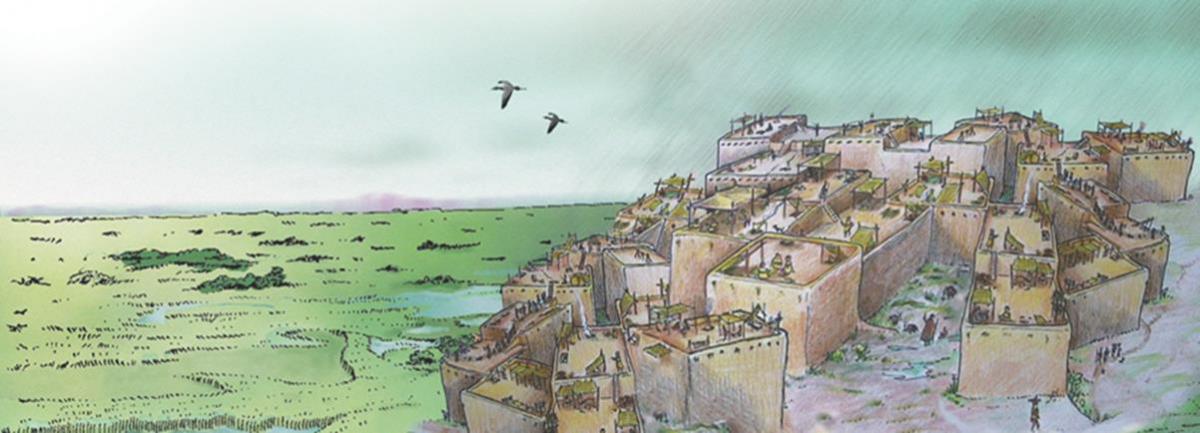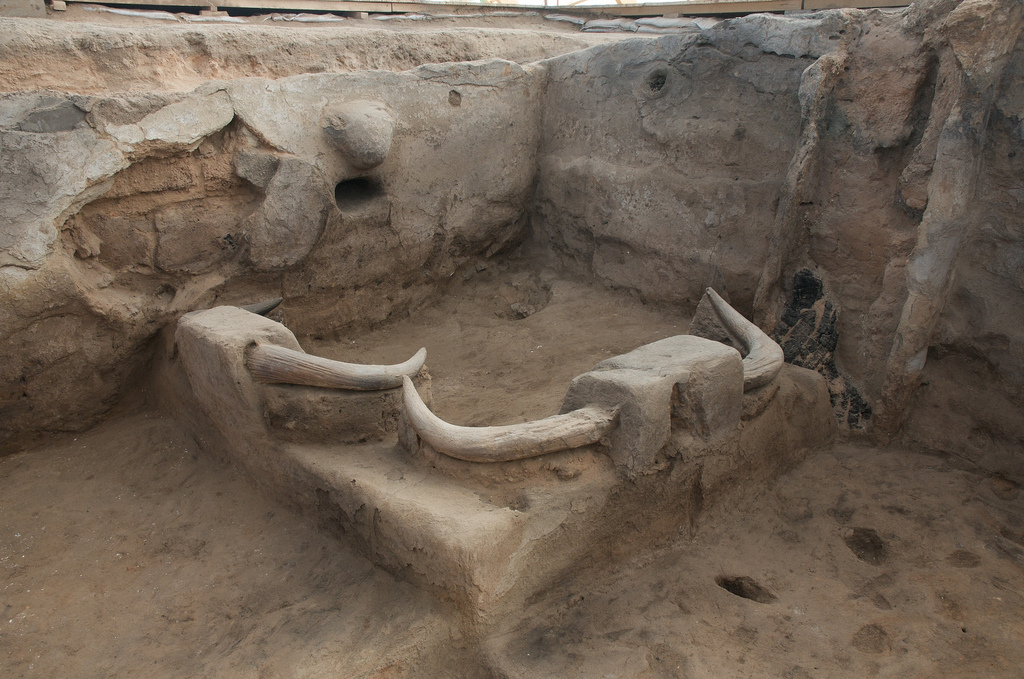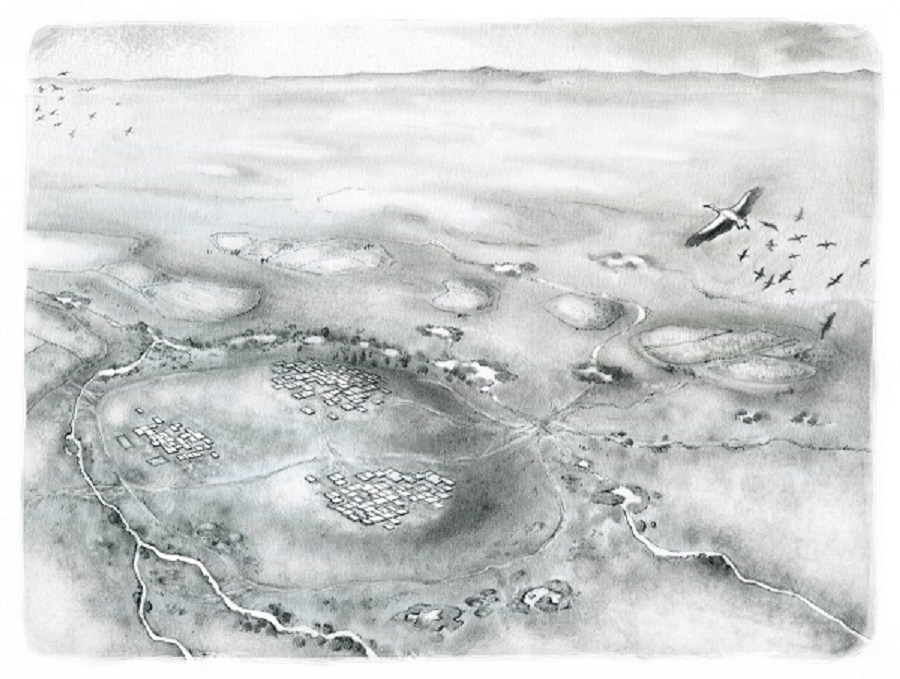The Rise and Fall of a Neolithic Town
Let’s take a journey back 9,000 years to 7,400BCE when people first settled at Çatalhöyük. In this period, the site was situated in a wetland where the climate was moist and rainy. A wide range of resources were available including fish, water birds and their eggs. On the drier ground there were agricultural fields, and herds of wild animals could be found roaming the plain.


This was a society undergoing continual transformation. By 6,500BCE we can see radical changes in behaviour. More efficient cooking pots were developed, which in turn created time for other activities. Domestic cattle and milk were introduced and there was an increase in housing and population density. Burials and ritual behaviour also became more elaborate. It is at this time that we begin to see the emergence of many of the decorative features that Çatalhöyük is famous for, such as figurative art. At its peak 3500-8000 people lived, worked and died here.
In the later period of occupation at Çatalhöyük, inhabitants of the East Mound started dispersing to the many other sites that grew up on the Konya Plain. One of these was the West Mound. Interestingly over the millennia, surrounding communities continued to use the East Mound for burial and other activities. Clearly this remained a special place in the landscape.
